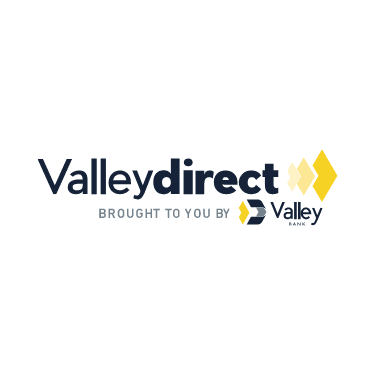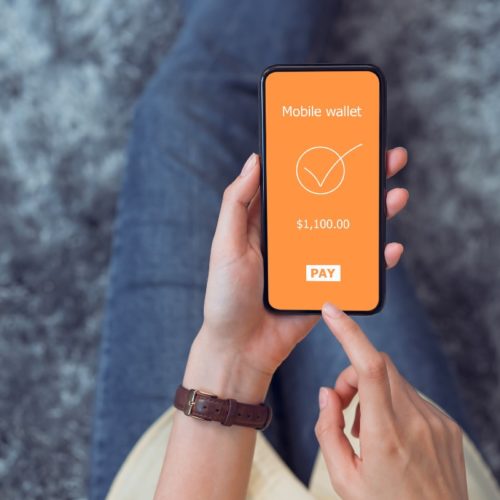Banks are financial institutions that provide a wealth of services to individuals and businesses, from deposit accounts to loans and investment services. They’re a staple in most people’s personal finances and the economy overall.
Let’s look at the basics of banking so you’ll know what to expect and where to find the best financial institutions for the financial services you need.
What is Banking?
Banking is the system of financial institutions that authorizes intermediaries, such as commercial banks and credit unions, to accept deposits and approve loans.
U.S. banks play an important role in the security of the global economy, so there are many rules and regulations governing banking activities and financial transactions.
There are different types of financial institutions, each of which will be held to specific standards. The banking system can be traced back to the 1300s and the overall themes haven’t changed much.
How Do Banks Work?
Banks work by providing financial services such as accepting deposits, lending money, and facilitating money transfers.
When you deposit money into a bank, the bank uses it to provide loans to other customers, earning interest on those loans. Meanwhile, you can withdraw your money when needed.
Banks also offer services like checking accounts, savings accounts, and credit cards. They make money by charging interest on loans and fees for certain services.
Additionally, banks play a crucial role in the economy by providing a secure place for people and businesses to store their money and access credit to fund investments and purchases.
Overall, banking is about managing and utilizing money to support both individuals’ and businesses’ financial needs.
Banking Services
Here are the basic services and accounts that banks typically offer:
1. Checking Accounts
Your checking account is a type of deposit account that lets you withdraw and deposit money as needed. The money in this account should be easy to access because you may use it several times daily.
It’s called a checking account because account holders used to frequently write checks. You can still write checks, but using your debit card or connecting your checking account to apps like Venmo, Zelle, and PayPal is easier in this day and age.
Most banks offer free checking accounts, though some free accounts may still charge you overdraft or ATM use fees.
While checking account balances haven’t always gained interest, now there are plenty of high-yield checking options.
Pro Tip: Check this post out to find the best places to cash checks with no fees.
2. Savings Accounts
Your savings account is where you store and save money, and ideally earn interest on your balance.
How much interest you’ll earn depends on what kind of account you have:
- Low rates: Your neighborhood branch of a large national or smaller regional bank will typically pay a lower interest rate. You may not notice your money growing if you have a small balance.
- Better rates: Money market accounts tend to pay higher interest rates, but you can only access your money six times a month.
- Best rates: An online-only bank usually gives you the best interest rates. Some online banks have 5% APY savings accounts.
You can find free savings accounts at most banks, although some banks charge fees if your balance falls below a pre-set level. You can also open multiple savings accounts at different banks.
3. Certificates of Deposit (CDs)
Savers who want to optimize their interest payouts tend to like certificates of deposit or CDs.
With a CD, you agree to leave your saved money alone for a specific period of time—3 months, 18 months, or 60 months. In exchange, you earn a higher interest rate on your savings.
If you access the money before its maturity date, expect to pay an early withdrawal fee or lose earned interest. CDs work well when you know you can leave the money alone for a while.
4. Borrowing Money
The reason you earn interest on the balance in your savings account is that you’re letting the bank use your money. On the other hand, when you borrow the bank’s money, you pay the bank interest.
Another term for using the bank’s money is getting a loan. Banks loan money in several different ways:
- Mortgage loans: Mortgage is the term you’ll see when shopping for a home loan.
- Auto loans: As you would expect, customers use auto loans to buy a car.
- Personal loans: Personal loans could help you pay larger personal expenses such as higher-than-expected income taxes, an unexpected dental procedure, or loan consolidation.
- Credit cards: Banks typically back credit cards that customers can use to make purchases.
Any time you borrow money, find out the interest rate you’ll be paying now and soon. Credit cards, for example, may charge incredibly high rates, which can impact your financial freedom.
Ideally, you should only borrow money when you have a good reason and a plan for getting out of debt.
Types of Banks
To choose the best bank, it helps to know about the different kinds of institutions you have access to:
1. Retail Banks
Retail banks are the banks with branches in busy shopping centers and Interstate exits.
They offer basic checking and savings accounts, credit cards, and other personal loans. Most retail banks now have a strong presence online, and some have excellent bonus cash promotions for signing up.
Pros
- The convenience of having branch offices nearby
- Typically large networks of ATMs
- Wide variety of financial products
Cons
- Lower savings rates
- Higher account fees
2. Credit Unions
These institutions work a lot like retail banks but without the goal of making a profit.
Credit unions are owned and operated by their members, Each member has a say in how the credit union is run and can vote on important decisions, regardless of how much money they have invested.
Pros
- Strong customer service
- Investment in the communities they serve
- Competitive interest rates and lower fees
Cons
- Fewer locations and ATMs
- Limited online tools in some cases
3. Online Banks
Online banks are retail banks that interact with customers exclusively (or almost exclusively) online.
Because they have fewer employees and locations, they can usually extend higher interest rates to account holders.
Pros
- Great savings rates
- Not limited by geography
- Can connect to retail banks through online banking
Cons
- No local bank branches
- More specialized banking services; limited financial products
Retail banks, online banks, and credit unions are the main types of institutions individuals and small businesses turn to, but there are a few additional ones to mention.
4. Commercial Banks
Commercial banks usually focus on serving businesses. They offer lines of credit and other business tools.
See our list of the best business checking accounts for 2024.
5. Savings and Loans Institutions
These institutions aren’t as numerous as they once were, but they’re still out there. They focus on real estate development by using their customers’ savings accounts to finance mortgages.
6. Investment Banks
Investment banks help connect investors with securities such as stocks, mutual funds, and bonds, to grow their money and manage their wealth. They may work exclusively with large corporations or serve the general public.
7. Central Banks
Most of us will have little direct interaction with a central bank, which helps set the monetary policy for a nation. In the United States, the central bank is the Federal Reserve. All other banks take cues from the Federal Reserve when setting their interest rates and regulations.
How Are Banks Regulated?
Banking failures, like the Great Depression and 2008 Housing Market Crash, have introduced a new player in the financial system: governments, which set rules for private banks and, in some countries, directly run the banking system. In the U.S., the Federal Reserve sets monetary policy and regulates private banks.
Often, after a recession or depression, governments ramp up the regulations, attempting to prevent more failures in the future. During the Great Depression of the 1930s, for example, Congress created the FDIC.
The FDIC guarantees Americans won’t lose their bank deposits. We still rely on the FDIC to protect our deposits of up to $250,000 per depositor, per insured bank, for each account ownership category.
Over time—especially during times of financial stability—governments face pressure to relax bank regulations.
Compared to the 1800s and early 1900s, we live in a time of stability for banks in developed nations. When you go to an ATM or deposit a check on your app, you have consumer protections through the federal Consumer Financial Protection Bureau and the FDIC.
The way you access your money, your knowledge about what the bank does with your money, and even the fees you’re charged — for all these issues and more, your bank has rules to follow.
How to Choose a Bank
Different types of banks meet different needs. For example, a small business may require different banking services than a large corporation.
Let’s look at the different steps of choosing a bank, so you can make an informed decision for your personal finances.
1. Consider Different Types of Accounts
Banks aren’t one-size-fits-all, and neither are accounts. While most banks will offer standard checking and savings accounts, each bank account will have different terms.
A traditional bank will likely serve you well if you have simple needs, such as a classic checking account, but you may want to look at online banks for a savings account with a high interest rate.Some banks even offer counseling services to help you choose the best account for your needs. A financial advisor with a fiduciary responsibility can help you identify the best accounts for your financial situation.
2. Evaluate Fees
Banking fees aren’t created equally, and high fees can eat into your total savings. When shopping for a bank, the lower the fees, the better.
Keep an eye out for the following:
- ATM fees: ATM fees come up whenever you make a withdrawal at a non-affiliated ATM. Some financial institutions will reimburse these fees.
- Monthly fees: Some bank accounts have monthly management fees, many of which can be waived by maintaining a minimum balance.
- Overdraft fees: Overdraft fees are common if you withdraw more than you have in your account, and the bank has to cover you.
The best bank accounts will have no monthly management fees and sufficient overdraft protection to minimize your financial liability.
3. Locate Bank Branches and ATMs
If you prefer the convenience of in-person banking and customer service, you’ll want to ensure your chosen bank has a local presence in your area.
With that said, online banking has boomed in recent years, and its low fees make it competitive against brick-and-mortar financial institutions.
4. Compare to Credit Unions and Community Banks
Not all Americans trust the big commercial banks. Credit unions and community banks aren’t for-profit institutions, allowing them to offer a personalized experience that aligns with their customers’ values.
Credit unions may have restrictions on the populations they serve, but the sector is growing, so it’s not hard to find one that meets your needs.
5. Know What Banking Services You Need
After reviewing the types of accounts each bank offers, you’ll want to define your needs.
Small business owners and self-employed individuals may want specialized support and access to tailored financial products, whereas a recent graduate may be comfortable with a traditional savings account while they build up their emergency fund.
Define your goals clearly to find the banking services and products that support your overall financial strategy.
6. Research Digital Features
In the modern world, most major banks offer some kind of digital experience to minimize your trips to the bank and ATM and tedious phone calls to check account balances, transfer funds, order checks, budget, and more.
At the bare minimum, your chosen bank should offer mobile check deposits and access to banking activity logs.
7. Confirm FDIC and NCUA Participation
Bank mergers, acquisitions, and closures happen. Every above-board financial institution will advertise participation in the Federal Deposit Insurance Corporation (FDIC) or the National Credit Union Administration (NCUA).
Verifying your chosen bank’s participation in these federal insurance programs guarantees you won’t lose your funds if the bank dissolves.
8. Read Reviews and Request Referrals
Personal experience is one of the best indicators of service. Ask your friends, family, colleagues, and neighbors where they like––and don’t like––to bank.
Consider reading reviews on Google, TrustPilot, the Better Business Bureau, and other reliable online resources, and go with your gut.
FAQs
What do banks do with your money?
Banks lend and invest your money after you deposit it. In exchange, banks will pay interest for certain types of accounts. Essentially, you become the bank’s creditor when you deposit funds.
Banks have to be mindful of liquidity concerns, so you’ll typically need to provide advance notice if you intend to make a large withdrawal.
How is a bank structured?
The organizational structure of a bank consists of business executives, director teams, department managers, and front-line staff.
The executives oversee financial services offered by the bank, such as wealth management services, personal loans, or mortgage loans. They may report directly to the chief operating officer (COO). Each executive builds a team of directors to manage different financial products or services. For example, one director may oversee credit cards underneath the larger consumer lending department.
The directors work above managers, who are responsible for bank branches, including the front-line support staff. These include mortgage lending officers, new account services, and tellers. Most banks operate through this structure due to the many checks and balances imposed on the banking industry and other financial institutions.
How much cash should you keep in the bank?
The amount of cash you should keep in the bank depends on your unique situation and your goals. Keeping money in the bank allows you to take advantage of competitive interest rates, financial protection, and other benefits of financial regulation.
In general, we recommend keeping at least three to six months of living expenses in the bank––ideally in a high-yield savings account––to support yourself if you go through a rough patch or other financial crisis.
Are credit unions safer than banks?
There isn’t much difference in the safety of credit unions vs. banks because both financial institutions are protected by federal insurance. Some families and businesses consider credit unions safer than banks in the global financial crisis because they generally take less risk and invest more locally.
However, banks and credit unions can join the FDIC and NCUA, which protects consumer deposits up to $250,000.







No comments yet. Add your own